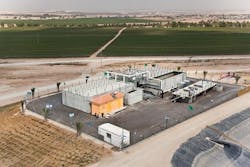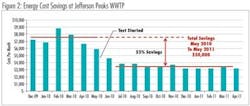pH Sensors: When to Calibrate, Clean or Perform a Calibration Check
By Fred Kohlmann
The phrase in the above title is actually incorrect in its sequence of wording. All pH readings are supposed to be taken and accepted only when the pH sensor is clean. After all, a contaminated pH sensor may yield an incorrect reading. So one must make sure the sensor is clean before doing a calibration. But once a pH sensor is installed in the process and operating, how do you determine when it is time to take the sensor out of the process and do a cleaning, or a calibration? Does one perform both a cleaning and a calibration or just a cleaning, or just a calibration, or does one just perform a calibration check in buffers or…?
This is something that can be quite confusing, especially when the operational practices and procedures documented by your company's Quality Control or Environmental Practices department may not be specific enough when they describe the procedure or the timing on when to conduct the pH calibration and maintenance. Inversely, the procedures may be too specific, detailing many more procedures and operations than are actually required.
In practical terms, users must develop their own maintenance and calibration schedule. This schedule is accomplished by taking the pH sensor out of the process after a set amount of time, perhaps after a day or two to perform a visual inspection of the sensor. If after inspection you find no debris or fouling on the electrode and reference surfaces with the naked eye, rinse the sensor off in distilled water and perform a buffer check.
To perform a buffer check, place the sensor into the calibration buffers you typically use and note the readings. If the readings are within the tolerances defined by your operational procedures, it is not necessary to perform a calibration. For example, let us use ±0.2 pH as your tolerances for pass/fail of a pH sensor reading in a calibration buffer. If the sensor reads within this value, in the offset (7 pH) and span buffers, (4 pH), the sensor needs no further action and can be reinstalled into the process. A calibration is not necessary. Repeat this exercise every few days until you see a change in either the level of debris/foulant on the electrode and reference surfaces, or more than the ±0.2 pH deviation as shown in the example above.
To a certain extent, the above procedure sets the benchmark for time between cleaning and calibration. Now, one needs to determine whether the sensor needs just a cleaning or a cleaning and re-calibration. This is done easily by first making sure the sensor is clean. (Refer to the section on Cleaning pH sensors). It may be as easy as rinsing the sensor in water or as complicated as using acid or caustic solutions to remove the particular contaminate buildup that has occurred.
Should the above steps not yield results that are within your pass/fail criteria, it is time for a sensor cleaning.
Cleaning pH sensors
For the sensor to maintain an accurate reading of the process pH, the sensor must remain clean. Specifically, the glass measuring electrode can not become coated and the reference electrode assembly must similarly not become coated, plugged or otherwise contaminated by the process solution.
If the sensor has a slight coating or scaling, this might be removed using a water jet from a faucet or spray bottle. More entrenched coatings may require the use of a gentle acid brush or tooth brush to carefully remove the coating.
Depending on the nature of the scale or coating, you may find it necessary to dip the sensor in a hot water solution containing Dawn® dishwashing detergent and then lightly scrub the electrode for a few seconds or so to facilitate cleaning.
For a more aggressive coating of the sensor and one in which the detergent cleaning does not suffice, you may have to dip the brush in a 2% HCI acid solution and then lightly scrub the electrode for a few seconds or so to facilitate cleaning. Alternatively, you may have to allow the sensor (electrodes) to soak in a similar solution for a few minutes to really work at attacking the contaminant.
Immediately after cleaning, rinse the sensor in water and allow the pH sensor to soak in tap water or a 7 pH buffer solution for a few minutes to allow the pH sensor to stabilize.
General Cleaning Procedure:
1. Keep sensor as reasonably clean as possible.
2. Remove the bulk of contaminant by carefully blotting/wiping away debris. Be careful not to rub too vigorously as this may cause static charge.
3. Rinse the sensor in warm tap water or distilled water.
4. Prepare a cleaning solution containing a soap and water mixture. Use dishwashing detergent and warm water. Use only soaps that do not contain abrasives or lanolin.
5. Soak the sensor in this solution for up to five minutes and then gently or while soaking, use a soft bristle brush to gently scrub the bulb and reference area of the sensor.
6. Rinse the pH sensor in warm tap water and check/standardize the sensor in buffer solutions.
If the readings in buffers are still out of tolerance:
7. Soak the sensor in 5% to 10% HCI acid solution for a few – less than five – minutes.
CAUTION!
Do not use this procedure if the sensor has been used in a solution containing cyanide as this may produce poisonous cyanide gas.
8. Rinse the sensor in warm tap water and then place the sensor into a mild soap solution for a minute or two to neutralize any remaining acid and let the sensor come to equilibrium.
9. Rinse in warm tap water and check/standardize the sensor in buffer solutions.
Should the above procedures yield results that are within your operational tolerances, the pH sensor is once again suitable for use. However if the above results do not bring the readings of the pH sensor within tolerance, it is time to replace the sensor
DECISION TREE
The decision tree is a quick graphic interpretation of the procedures outlined in the previous text.
About the Author: Fred Kohlmann is a Product Business Manager for Analytical Products with Endress+Hauser. Since 1976, he has been involved in engineering, design service, marketing, and sales of online analytical water quality and process control instrumentation. Kohlmann has taught accredited course work and authored numerous articles relating to pH, ORP and conductivity measurements. Past publications include "What Is pH and How Is It Measured?", a primer on the use of pH instrumentation, and "Electrical Conductivity Measurements" in the "Process/Industrial Instruments and Controls Handbook", Fourth Edition, by McGraw Hill, Douglas M. Considine Editor.
More WaterWorld Current Issue Articles
More WaterWorld Archives Issue Articles



